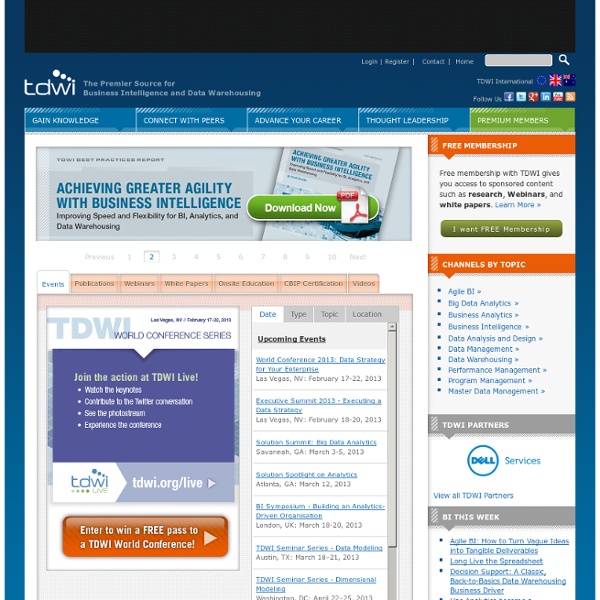



Native XML Database Beginner’s guide to becoming a Business Intelligence Expert | Join Sights – Johan Åhlén What makes someone a Business Intelligence expert? Is it about depth of knowledge or maybe recognition? Who decides what knowledge a Business Intelligence expert should have? Learning “It ain’t what people don’t know that hurts them it’s what they know that ain’t so” -commonly attributed to Mark Twain I view learning as a process in three phases The unawareness phase – For example: “There’s a red lamp lit on the instrument panel of my car but I just ignore it.”The awareness phase - where you are aware of your own limited knowledge of the topic. These phases can also be illustrated as in the picture below. I agree with Mark Twain (or whoever came up with that statement) that it is the things we falsely believe we know that causes the biggest mistakes, cost and lost time also within Business Intelligence. Visit conferences. “The time is always right to do what is right” – Martin Luther King Jr Now you may think this all sounds great – if you only had time. Recognition Now go ahead and try!
XML representation of a relational database A relational database consists of a set of tables, where each table is a set of records. A record in turn is a set of fields and each field is a pair field-name/field-value. All records in a particular table have the same number of fields with the same field-names. This article describes an application of (a simple subset of) XML that can be used to represent such a database. The relational data-model also defines certain constraints on the tables and defines operations on them. Several such languages are possible, of course, and it not hard to come up with alternative and equally valid ones as the one described below. Introduction The description of the database above suggests a simple nesting of fields inside records inside tables inside databases. <! The format is verbose, since XML is verbose. The database A relational can be modeled as a hierarchy of depth four: the database consists of a set of tables, which in turn consist of records, which in turn consist of fields. <! The table <! etc.
XML and Databases Copyright 1999-2005 by Ronald Bourret Last updated September, 2005 This article also available in: Table of Contents 1.0 Introduction This paper gives a high-level overview of how to use XML with databases. NOTE: Although the information discussed in this paper is (mostly) up-to-date, the idea that the world of XML and databases can be seen through the data-centric/document-centric divide is somewhat dated. 2.0 Is XML a Database? Before we start talking about XML and databases, we need to answer a question that occurs to many people: "Is XML a database?" An XML document is a database only in the strictest sense of the term. A more useful question to ask is whether XML and its surrounding technologies constitute a "database" in the looser sense of the term -- that is, a database management system (DBMS). A good example of the type of "database" for which an XML document is suitable is an .ini file -- that is, a file that contains application configuration information. 3.0 Why Use a Database?
Joe Celko The SQL Apprentice PostgreSQL: The world's most advanced open source database SQL Server 2008 R2 Express - Overview Things you can do Build web and mobile applications for multiple data types Support structured and unstructured data while storing business data with native support for relational data, XML, and spatial data. Add geographical information to business applications and build location-aware applications. Easily manage SQL Server instances Manage SQL Server Express databases with SQL Server Management Studio Express. Basic reporting services Visualize data through basic Reporting Services (available with SQL Server Express with Advanced Services) and create readable reports that answer complex user questions. Simplify and speed development with rich developer tools Take advantage of existing Transact-SQL skills, and incorporate technologies like Microsoft ADO.NET Entity Framework and LINQ. Embed lightweight database into basic desktop applications SQL Server Express LocalDB is a lightweight deployment option for SQL Server Express with fewer prerequisites.